NeveSSL
New member
Hi all!
For my final class of college, I'm building an INA217 preamp based just on the schematic in the data sheet and playing around with it. I'm also comparing it to some other pres and writing about a 26p report on it, but thats rather boring.
I got a power supply from FiveFishStudios (Great supply, BTW) and just put the circuit together on some small perf boards from ratshack.
All of my pics can be found here, but here are a few:
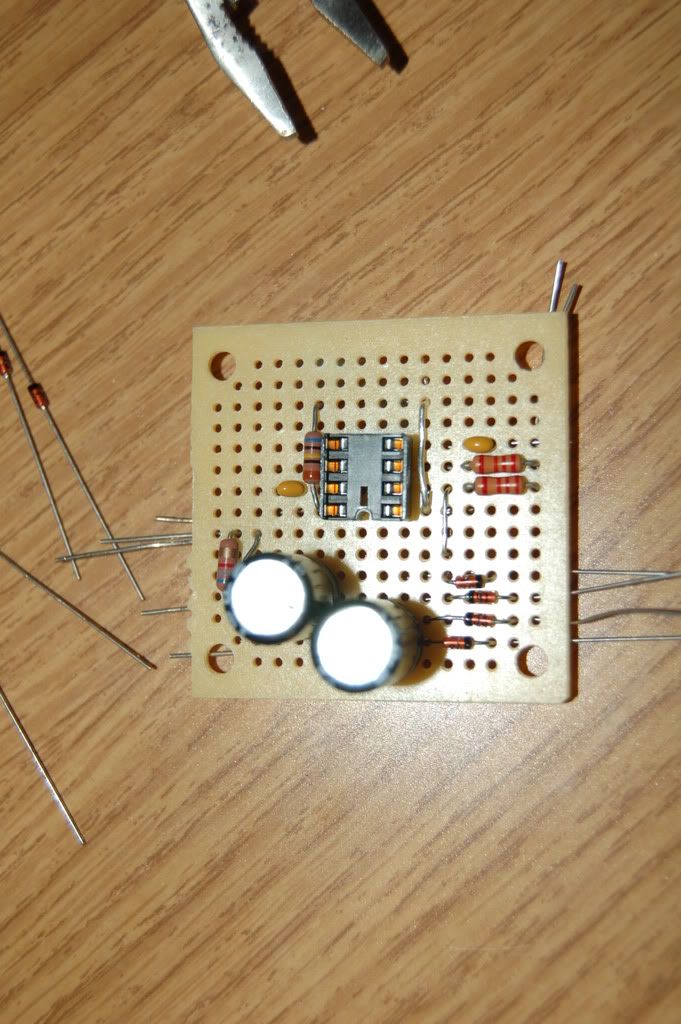
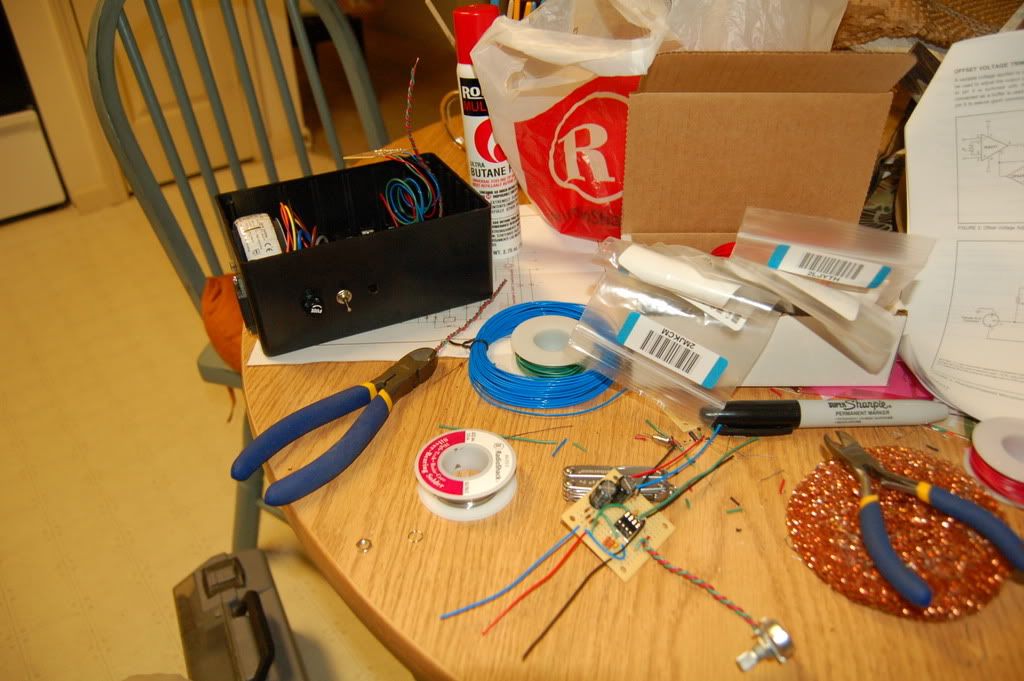
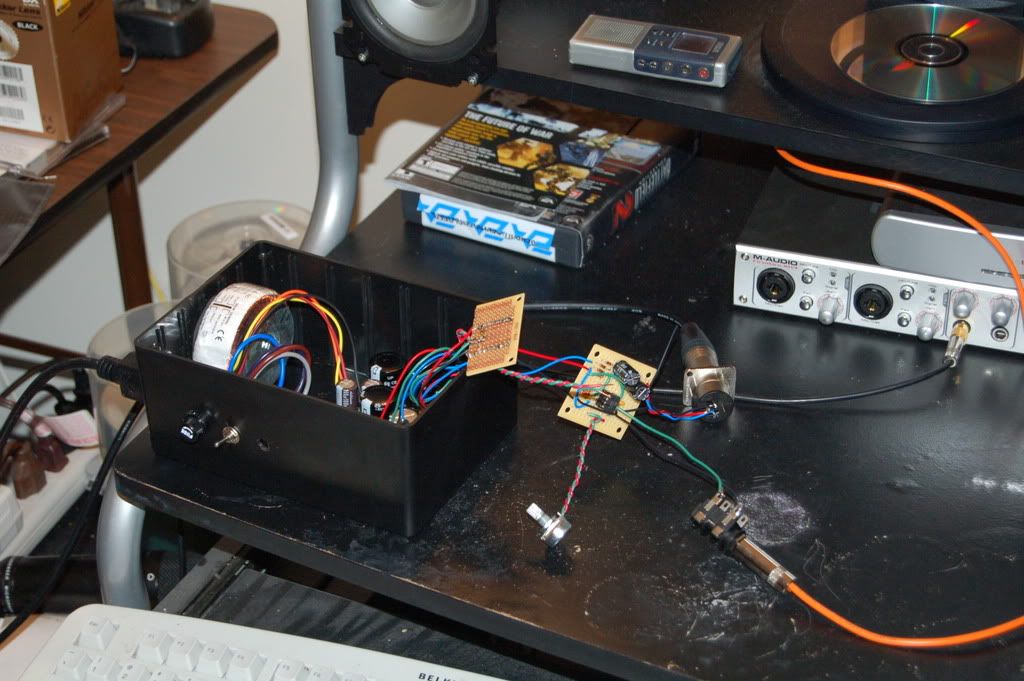
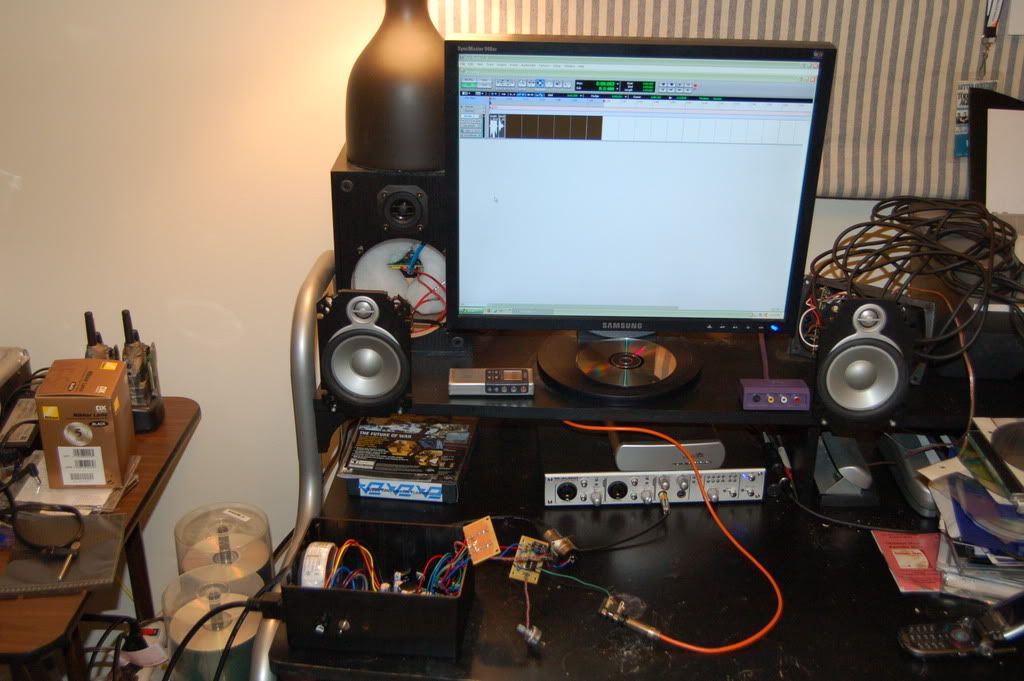
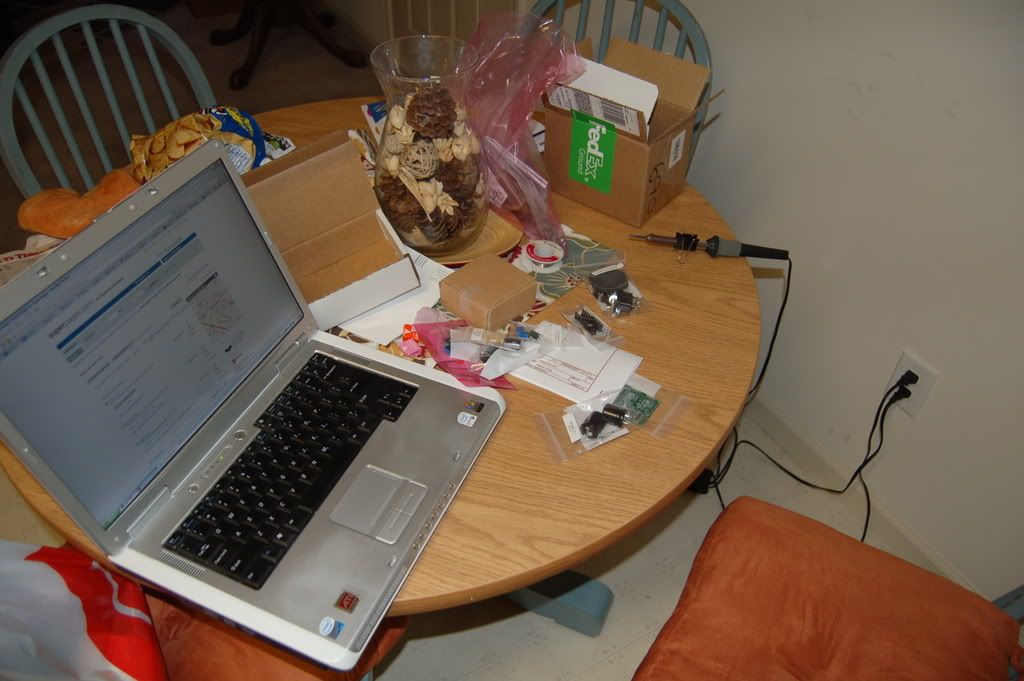
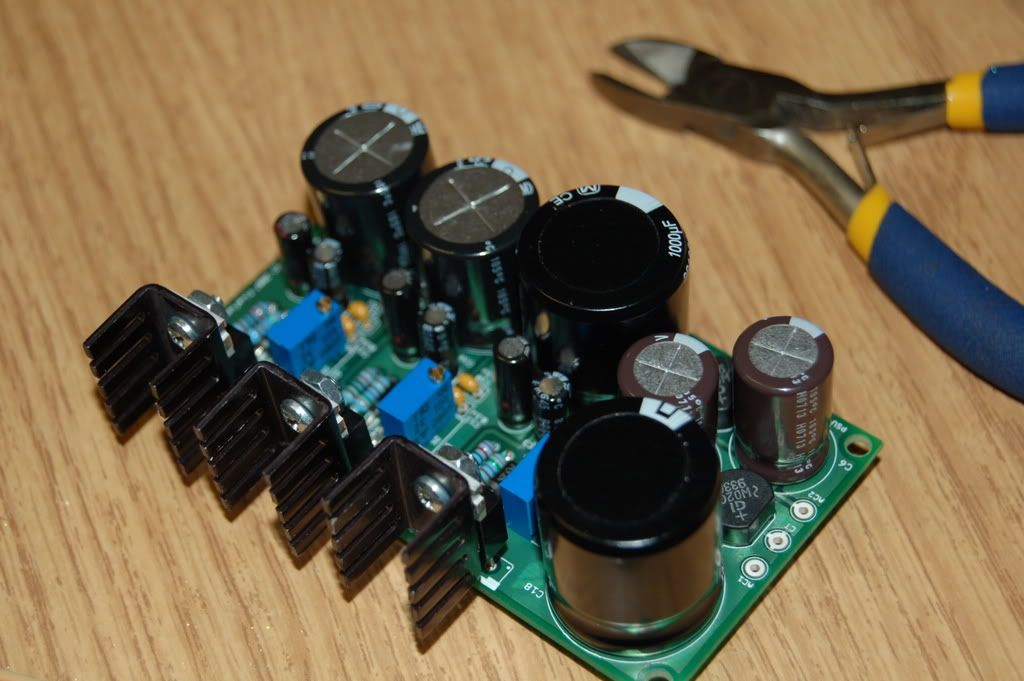
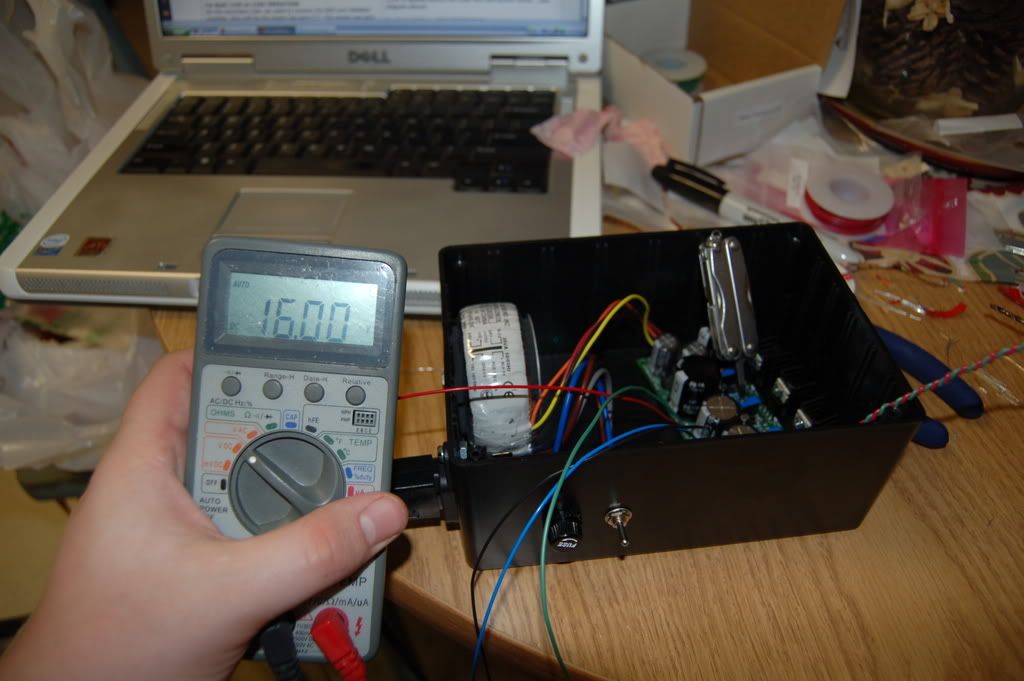
Sounds AWESOME! Very, very clean and UNBELIEVABLY quiet! I love it! Its at least a step above the pres in my M-Audio unit. Definitely usable.
Now for the problem... I can't get the gain low enough!
I'm not completely sure I understand how to setup my pot for gain. mshilarious, where are you?
Any help would be much appreciated.
So far I've connected a 1k pot and a 500ohm resistor (barely moved when I used the pot), a 25k pot (just for the heck of it ), a 1k pot with 10r resistor, 1k pot with 100r resistor, etc. Nothing really gets quiet at all... and this goes for both channels I've got and I was testing with a dynamic mic.
), a 1k pot with 10r resistor, 1k pot with 100r resistor, etc. Nothing really gets quiet at all... and this goes for both channels I've got and I was testing with a dynamic mic.
Any suggestions? The schematic calls for (if I'm reading it correctly) a 1.6k pot and a 8ohm resistor in series. Maybe I've got my pot hooked up wrong. Hmmm... need to go back and look... The way I have it wired is this: The 10ohm is connected to pin 1 on the INA and the wiper on the pot. One side of the pot is wired to pin 8 to finish the loop.
Hmmm... do I need the wiper and side connection connected together and then those two in series with the 10r? Maybe... I think that may be it...
Anyone have any ideas?
Thanks! And BTW, these things are definitely worth 4 channels at $130 or so.
Brandon
For my final class of college, I'm building an INA217 preamp based just on the schematic in the data sheet and playing around with it. I'm also comparing it to some other pres and writing about a 26p report on it, but thats rather boring.

I got a power supply from FiveFishStudios (Great supply, BTW) and just put the circuit together on some small perf boards from ratshack.

All of my pics can be found here, but here are a few:







Sounds AWESOME! Very, very clean and UNBELIEVABLY quiet! I love it! Its at least a step above the pres in my M-Audio unit. Definitely usable.
Now for the problem... I can't get the gain low enough!
I'm not completely sure I understand how to setup my pot for gain. mshilarious, where are you?

Any help would be much appreciated.
So far I've connected a 1k pot and a 500ohm resistor (barely moved when I used the pot), a 25k pot (just for the heck of it
 ), a 1k pot with 10r resistor, 1k pot with 100r resistor, etc. Nothing really gets quiet at all... and this goes for both channels I've got and I was testing with a dynamic mic.
), a 1k pot with 10r resistor, 1k pot with 100r resistor, etc. Nothing really gets quiet at all... and this goes for both channels I've got and I was testing with a dynamic mic. Any suggestions? The schematic calls for (if I'm reading it correctly) a 1.6k pot and a 8ohm resistor in series. Maybe I've got my pot hooked up wrong. Hmmm... need to go back and look... The way I have it wired is this: The 10ohm is connected to pin 1 on the INA and the wiper on the pot. One side of the pot is wired to pin 8 to finish the loop.
Hmmm... do I need the wiper and side connection connected together and then those two in series with the 10r? Maybe... I think that may be it...
Anyone have any ideas?

Thanks! And BTW, these things are definitely worth 4 channels at $130 or so.

Brandon


